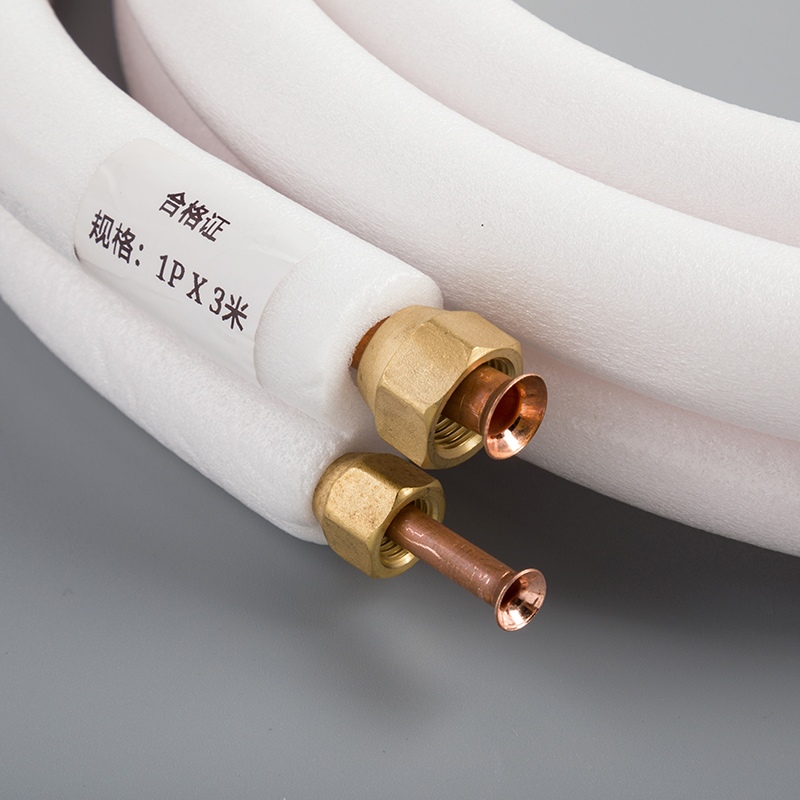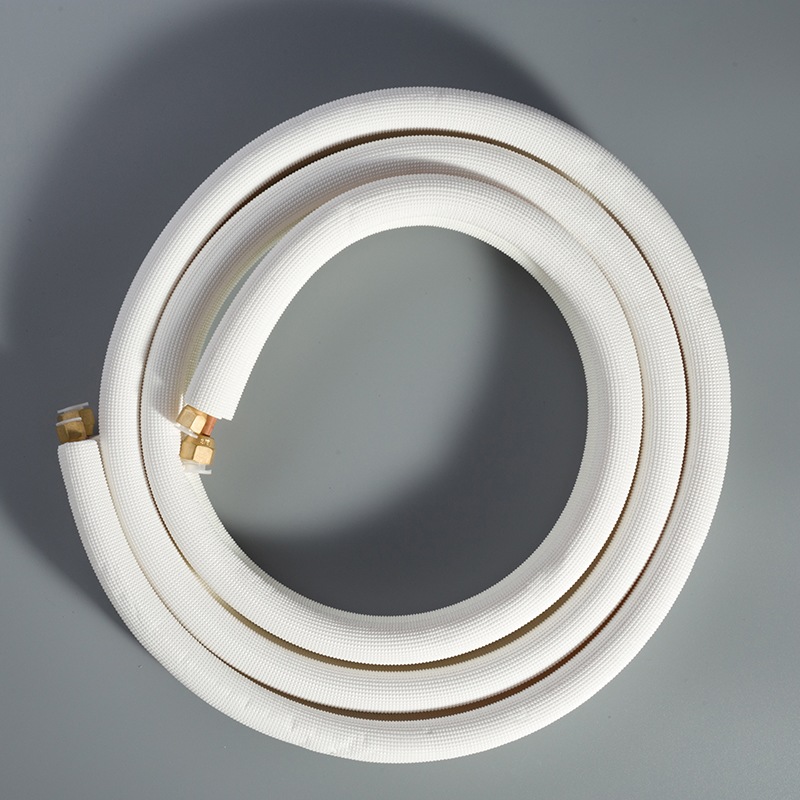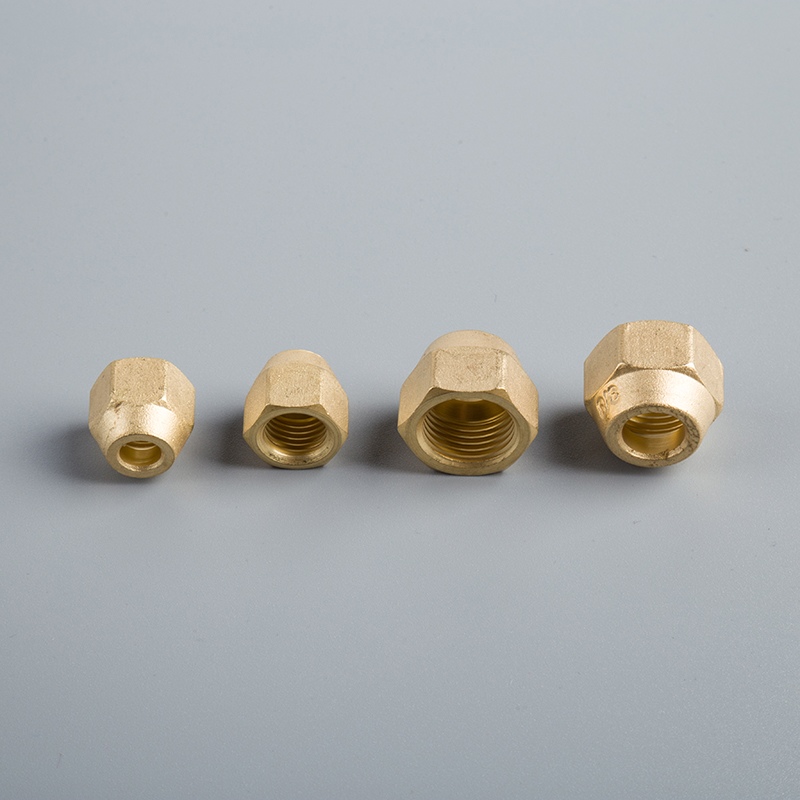Benefits of Using Rigid Copper for A/C Line Sets

Recommendation: Advice on using rigid copper for A/C line sets
Copper pipes play a vital role in HVAC systems, especially in A/C line sets. These pipes are the lifelines that ensure efficient cooling and heating within your space. While various materials are used for A/C line sets, rigid copper stands out as a preferred choice for numerous reasons. Its durability, thermal conductivity, and ease of installation make it a top contender in the industry. Let's delve into why rigid copper is the go-to material for ensuring optimal performance and longevity in HVAC systems.
Advantages of Rigid Copper for A/C Line Sets

Durability and Longevity
Copper pipes are renowned for their exceptional durability and longevity in HVAC systems. When comparing different types of copper, rigid copper stands out for its remarkable ability to withstand harsh conditions and last for decades without compromising performance.
Resistance to Corrosion
One of the key advantages of rigid copper is its inherent resistance to corrosion. This property ensures that the A/C line sets remain intact over time, even in environments with high humidity or chemical exposure. The protective oxide layer formed on the surface of rigid copper acts as a shield against corrosive elements, enhancing the overall lifespan of the system.
High Tensile Strength
Another notable feature of rigid copper is its high tensile strength, which makes it capable of withstanding significant pressure and mechanical stress. This strength is crucial in ensuring that the A/C line sets maintain their structural integrity under varying operating conditions, reducing the risk of leaks or failures.
Thermal Conductivity
In addition to its durability, rigid copper excels in terms of thermal conductivity, making it an ideal choice for efficient heat transfer within HVAC systems. The superior thermal properties of copper allow for rapid dissipation and absorption of heat, contributing to enhanced cooling and heating performance.
Efficient Heat Transfer
The exceptional heat transfer efficiency of rigid copper enables quick and consistent exchange of thermal energy between the refrigerant and the surrounding air. This results in faster cooling cycles and improved overall energy efficiency, ultimately leading to reduced operational costs.
Energy Efficiency
By promoting optimal heat exchange, rigid copper contributes to enhanced energy efficiency in HVAC systems. The ability to transfer heat effectively reduces the workload on the compressor, resulting in lower energy consumption and increased sustainability.
Ease of Installation
When it comes to installation convenience, rigid copper offers unparalleled benefits that streamline the setup process for A/C line sets.
Flexibility in Design
The inherent flexibility in design provided by rigid copper allows HVAC professionals to create customized configurations tailored to specific project requirements. Whether navigating tight spaces or accommodating unique layouts, the malleability of rigid copper simplifies installation challenges.
Compatibility with Existing Systems
Furthermore, rigid copper's compatibility with existing HVAC systems ensures seamless integration during upgrades or replacements. Its standardized fittings and connections facilitate a hassle-free installation process without requiring extensive modifications.
Cost-Effectiveness
When considering the use of rigid copper for A/C line sets, it's essential to evaluate its cost-effectiveness in the long run. By focusing on long-term savings and low maintenance costs, you can make an informed decision that aligns with your budget and operational needs.
Long-Term Savings
Investing in rigid copper for your A/C line sets can lead to significant long-term savings. While the initial cost may be higher compared to other materials, such as flexible copper or different types like Type K, Type L, or Type M, the durability and reliability of rigid copper offer extended benefits over time.
Rigid Copper vs Flexible Copper vs Type K vs Type L vs Type M:
Rigid copper: Ideal for interior residential plumbing.
Flexible copper: Typically used outdoors.
Type K: Thickest and most expensive.
Type L: Preferred for versatility and longevity.
Type M: Commonly utilized in residential water supply pipes.
Low Maintenance Costs
In addition to long-term savings, opting for rigid copper A/C line sets can result in low maintenance costs throughout the system's lifespan. Unlike some alternatives like Type L or Type M, which may require more frequent upkeep, rigid copper offers a balance between cost efficiency and performance reliability.
Type L vs Type M vs Type K:
Type L: Affordable yet durable choice.
Type M: Widely used in residential water supply pipes.
Type K: Thickest and priciest option available.
Type M vs Copper vs DWV-grade:
Type M: Commonly seen in residential water supply systems.
Copper: Suitable for both water supply lines and drain/vent applications.
DWV-grade: Recommended specifically for drain, waste, and vent lines.
Considering the comparative advantages of various materials alongside the specific requirements of your HVAC project can help you make a cost-effective decision that ensures optimal performance without compromising on quality.
Addressing Potential Concerns
Initial Cost
When considering the initial cost of implementing rigid copper for A/C line sets, it's essential to evaluate the long-term benefits that outweigh the upfront investment. By comparing rigid copper with other materials commonly used in HVAC systems, you can gain a comprehensive understanding of its value proposition.
Comparison with Other Materials
Rigid Copper vs Flexible Copper:
Rigid copper offers superior durability and longevity compared to flexible copper, ensuring extended service intervals and reduced maintenance costs.
Rigid Copper vs Type K, Type L, or Type M:
While Type K may be the thickest and most expensive option, rigid copper provides a balance of performance and affordability suitable for various HVAC applications.
Justification of Investment
Investing in rigid copper for A/C line sets is not just an expense; it's a strategic decision that yields long-term benefits. The enhanced small-diameter copper tubes offer significant cost-saving advantages by reducing maintenance costs and extending service intervals. By prioritizing quality and durability, you are making an investment in the efficiency and reliability of your HVAC system.
Weight Considerations
When addressing weight considerations related to rigid copper A/C line sets, it's crucial to focus on handling practices during installation and ensure adequate structural support to maintain system integrity.
Handling and Installation
Proper handling techniques during the installation of rigid copper pipes are essential to prevent damage or deformation that could compromise their performance.
Following industry best practices for installation can optimize the efficiency and longevity of the A/C line sets while minimizing potential risks associated with mishandling.
Structural Support Requirements
Providing adequate structural support for rigid copper A/C line sets is critical to maintaining their stability under varying operating conditions.
Ensuring proper anchoring and bracing mechanisms can prevent issues such as sagging or misalignment, preserving the functionality and safety of the HVAC system.
Supporting Scientific Evidence

Studies on Material Performance
Copper pipes in Construction Industry
Key Findings:
Copper pipes offer excellent corrosion resistance and reliable connections.
Rigid copper is considered sturdier but more expensive than PEX.
Types of Copper Pipes
Key Findings:
Copper gradually replaced galvanized steel in residential plumbing systems.
Copper pipes are either flexible or rigid, with rigid copper being commonly used in interior residential plumbing.
Expert Opinions
HVAC Professionals
HVAC professionals emphasize the importance of using rigid copper for A/C line sets due to its durability and efficiency in heat transfer. They recommend considering the long-term benefits of rigid copper despite the initial cost investment.
Industry Standards
Industry standards highlight the reliability and longevity of rigid copper in HVAC systems. The use of rigid copper aligns with industry best practices, ensuring optimal performance and minimal maintenance requirements.
Additional Resources
Further Reading
Related Articles
Copper pipes are utilized across various industries, including fire protection systems, air conditioning and refrigeration (ACR), and primarily in plumbing.
Type L copper pipes are commonly used for interior plumbing, fire protection, and certain HVAC applications. They are available in rigid and flexible forms, with Type L being the most prevalent type of copper piping due to its versatility.
Technical Manuals
HVAC professionals emphasize that copper yields superior products with proven longevity, making it easy to inspect, test, and repair coils. Inner-grooved small-diameter copper tubes are ideal for HVAC/R equipment design, offering significant cost savings over time.
Type L copper pipes are thinner than Type K but thicker than Type M. They are commonly used for repairing or replacing old branch water lines and can be directly exposed outside the home.
Rigid Copper Pipe offers a multitude of benefits for A/C line sets, ensuring durability and efficiency in HVAC systems. Considered ideal for residential, commercial, and institutional applications, Type L copper pipe stands out as a reliable choice with its distinctive blue stamp. Embracing rigid copper not only guarantees longevity but also enhances the overall performance of your HVAC projects. Explore the versatility of copper pipes—from Type K to Type M—and make informed decisions to elevate your cooling and heating systems.
See Also
Key Advantages of Copper Tubing for Air Conditioning Units
Benefits of Opting for Copper Tubing in AC Systems
The Advantages of Copper Piping in AC Innovation


